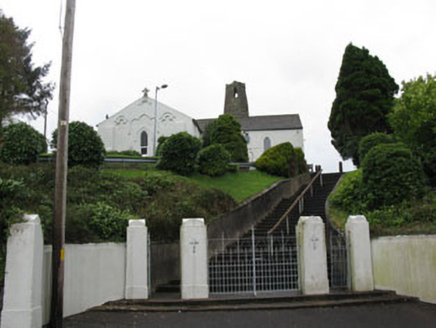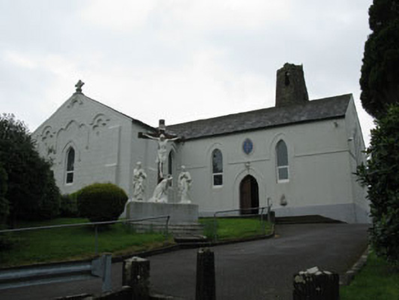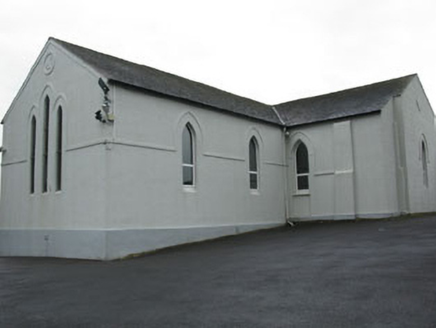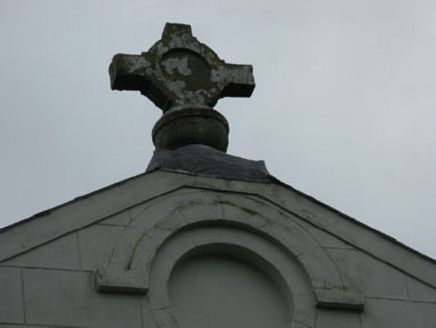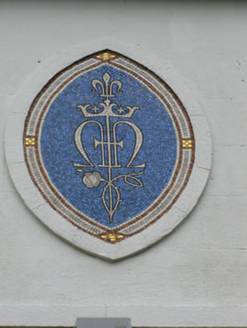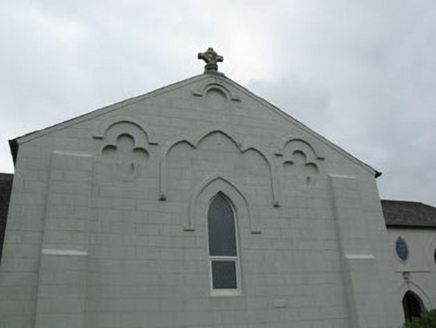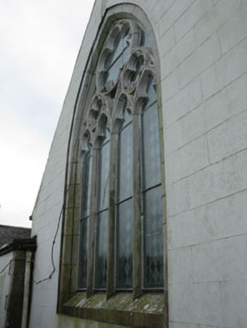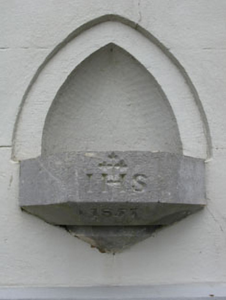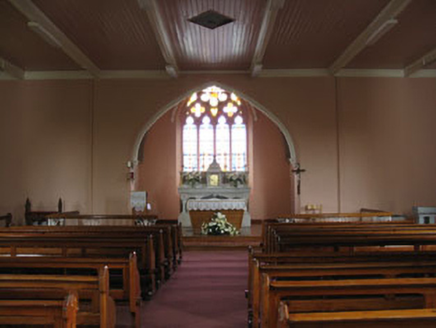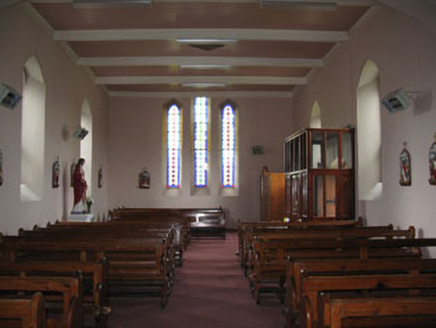Survey Data
Reg No
20906216
Rating
Regional
Categories of Special Interest
Architectural, Artistic, Social
Original Use
Church/chapel
In Use As
Church/chapel
Date
1810 - 1820
Coordinates
160533, 78201
Date Recorded
28/04/2009
Date Updated
--/--/--
Description
Freestanding cruciform-plan Roman Catholic church, built 1815-7, extended and altered, 1857. Two-bay double-height nave with single-bay double-height transepts to side (east, west), chancel to north and pitched roof sacristy to north-east corner. Pitched slate roof with carved stone cross finials to transept gable ends, uPVC rainwater goods and cast-iron downpipes. Lined-and-ruled rendered walls with render platband at impost level of nave incorporating hood-mouldings. Recessed quatrefoil and ocular motifs to west transept below hood-moulding. Relief moulded quatrefoil motif to gable of east transept, circular motif to gable of south elevation. Dressed limestone quoins to chancel and rendered buttresses to transepts. Decorative tiled mosaic oval panel over door. Pointed arch window openings with chamfered rendered sills surmounted by render hood-mouldings to nave and transepts having replacement uPVC windows. Triplet of lancet stained glass windows to south elevation. Pointed arch window opening with chamfered limestone sill and surround to chancel having tooled limestone reticulated tracery and lead-line stained glass windows. Pointed arch door opening with render surround to west elevation of transept having double-leaf timber battened door opening onto cut limestone steps. Carved limestone font dated 1857 set into wall to south of door opening. Timber battened panels to interior ceiling, with carved marble reredos behind altar. Carved marble crucifixion scene to west of church within grounds. Square-profile rendered piers flanking wrought-iron gates to front of site.
Appraisal
Built in the early decades of the nineteenth century, this church was remodelled and extended in 1857. The growing confidence of Roman Catholics following emancipation in 1829 resulted in a building and remodelling campaign, which though halted by the Great Famine, accelerated in the latter part of the century. Set on an elevated site, this Gothic Revival building make a notable contribution to the surrounding area.
